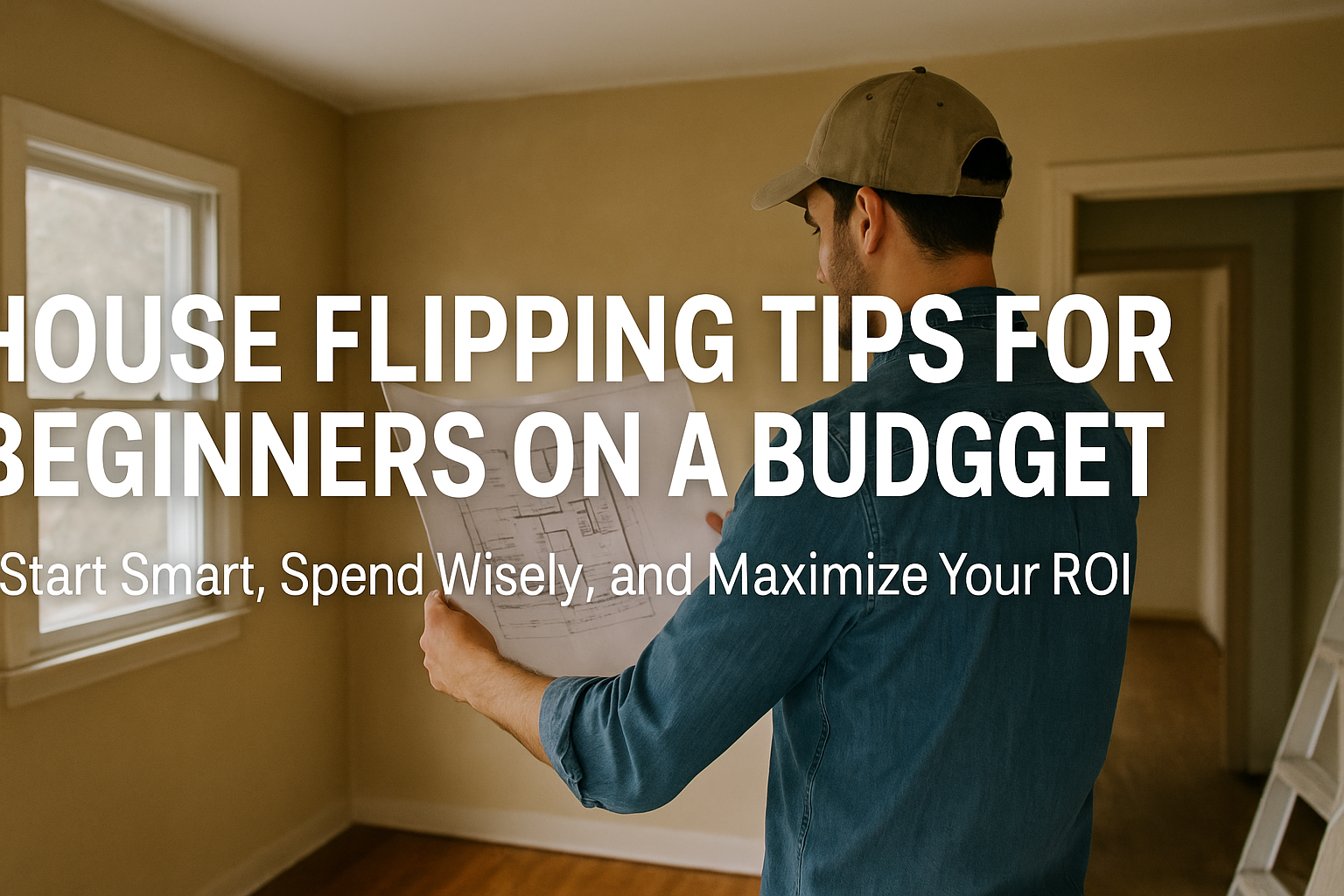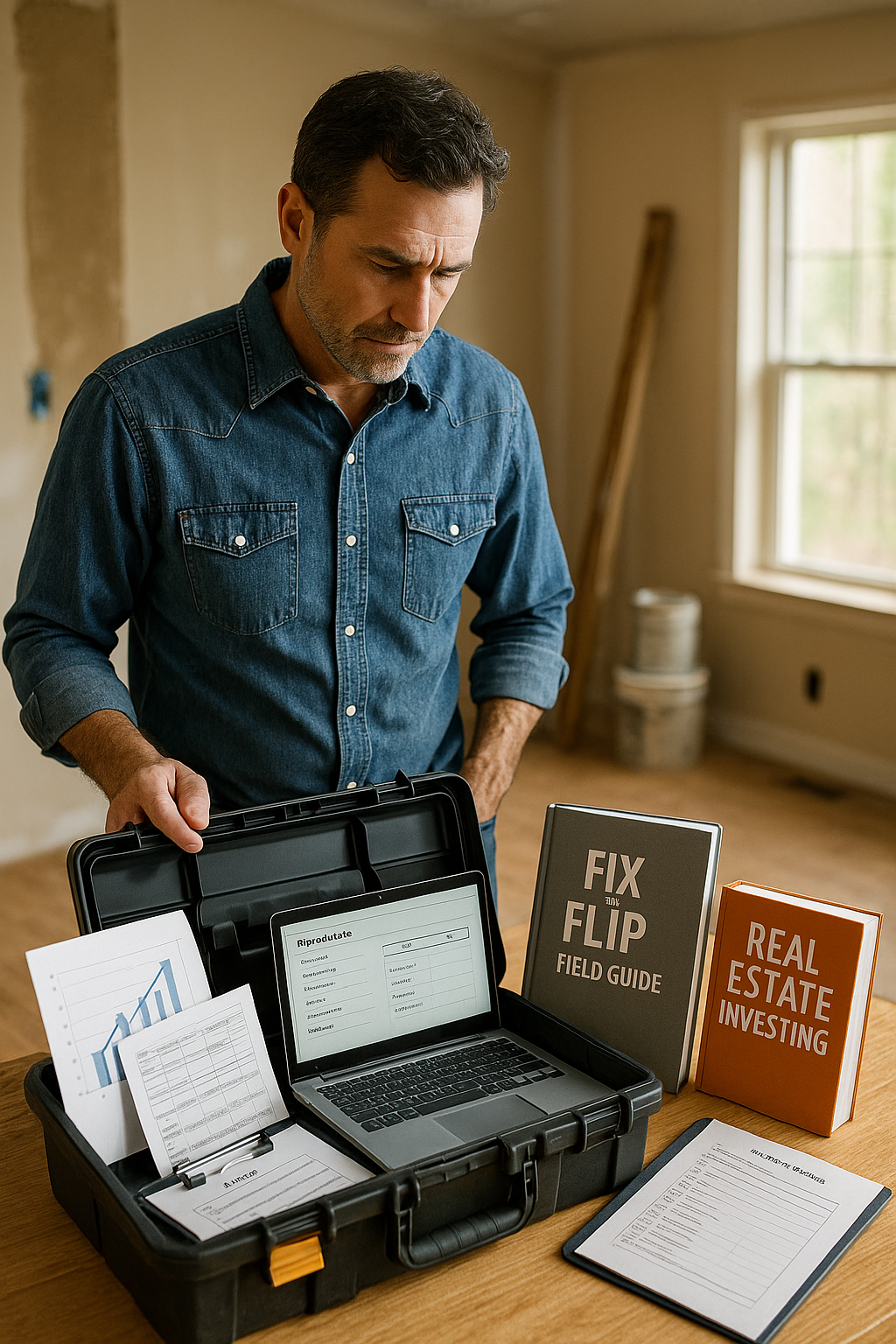House Flipping Tips for Beginners on a Budget — Start Smart, Stay Safe
 House Flipping Tips for Beginners on a Budget
House Flipping Tips for Beginners on a BudgetFlipping houses doesn’t have to cost a fortune. In fact, some of the most successful investors got started by being resourceful—not rich. These house flipping tips for beginners on a budget will show you how to break into the flipping game strategically, avoid financial traps, and build real momentum even if you're starting small.
1. Focus on Undervalued Neighborhoods with Upside Potential
Don’t chase the prettiest zip codes—look for areas on the rise. Target neighborhoods where prices are still affordable but signs of revitalization are showing: updated parks, new businesses, and low days-on-market stats.
Pro Tip: Use free tools like Zillow filters, Redfin, or city planning websites to scout trends without spending a dime.
2. Partner with People, Not Just Capital
If you lack upfront cash, bring value another way. Maybe you have sweat equity, contractor connections, or marketing savvy. Many flips start with joint ventures where one party brings funding and the other handles the renovation hustle.
Real Talk: Deals don’t die from lack of money. They die from lack of creativity.
3. Stick to Cosmetic Fixes, Not Full Guts
Beginner flippers should avoid homes needing structural repairs, foundation work, or major plumbing/electrical updates. Instead, aim for properties where paint, landscaping, and light remodeling make a big visual impact.
Why? Because you’ll stay on budget, on timeline, and on the buyer’s radar without blowing your profit margin.
Experts agree that beginner flippers should avoid heavy rehabs. U.S. News & World Report recommends focusing on cosmetic upgrades that provide visual impact without budget blowouts.
4.
House Flipping Tips for Beginners on a Budget: Why Less Renovation Is More Profit
One of the biggest beginner mistakes? Treating the flip like a custom dream home. You’re not renovating for you—you’re renovating for ROI. Choose finishes based on what sells, not what’s trending on HGTV.
Check comps. Match neighborhood standards. Get in, get out, and get paid.
5. Leverage OPM (Other People’s Money)
You don’t need personal savings to flip a home. Hard money lenders, private investors, and even seller financing can open the door if the deal is good enough. The key is structuring it right—build in profit from day one.
6. Learn to Run the Numbers Like a Pro
Your first tool isn’t a hammer—it’s a spreadsheet. You must know how to evaluate ARV (After Repair Value), estimate repair costs, and calculate holding expenses before you ever make an offer.
Even a cheap flip can lose money if the math is off. Download a free ARV calculator or use free deal analyzer templates to stay sharp.
7. Build a Reliable, Budget-Friendly Team
Hiring a contractor doesn’t have to break the bank. Start by forming relationships with licensed handymen, newer GCs looking to build their rep, or investor-friendly subcontractors who understand flipping constraints.
Tip: Offer repeat business in exchange for discounted rates.
8. Expect the Unexpected—Pad Your Budget
Even with the best planning, surprises will happen. Budget an extra 10–15% for contingency so you’re not wiped out by a hidden plumbing leak or permit delay.
Budget flippers survive by planning for what could go wrong, not just what should go right.
9. Market the Finished Property Before It’s Finished
Pre-market your flip with sneak peeks on social media, flyers, and buyer’s agents. Start generating buzz while the reno is still wrapping. Speed to market = faster offers = lower carrying costs.
10. Learn Before You Leap
Every successful flipper starts as a student. Study deals. Read case studies. Join investor meetups. Watch YouTube reno breakdowns. And best of all—get your hands on trusted resources built for real flippers.
💡 Bonus Tip:
Your first flip doesn’t have to be perfect—just profitable.
Focus on learning as you go, avoiding major budget busters, and stacking small wins. Each deal is a stepping stone to smarter, faster flips in the future—so document everything, reflect often, and stay committed to improvement.

You’ve just unlocked a full toolbox of budget-smart flipping strategies -
from evaluating deals to avoiding costly renovation traps. The Bonus Tip you just read is the perfect reminder:
it’s not about perfection, it’s about profit and progress.
Now let’s take it further…
🛠️ Learn the 10 must-know strategies every house flipper should use before picking up a hammer.
✅ Spot hidden risks, maximize ROI, and stay on budget from day one. Click here to get our Fix and Flip Field Guide (FREE PDF)
🌲 Apply your flipping mindset to land deals.
✅ Think land - no rehabs, no contractors. Learn how to find undervalued parcels, subdivide smartly, and resell for pure profit. Get our Vacant Land Flipping Action Guide (PDF) - It's Free, Too! Click here to download it now!
Final Thoughts
Getting started with house flipping doesn’t require deep pockets—just a sharp eye, a solid plan, and a willingness to act. So pick your path—house, land, or both—and put your next flip in motion.
Your next profitable deal is waiting.
Home > Real Estate Articles >> Flipping Real Estate >> House Flipping Tips for Beginners on a Budget

